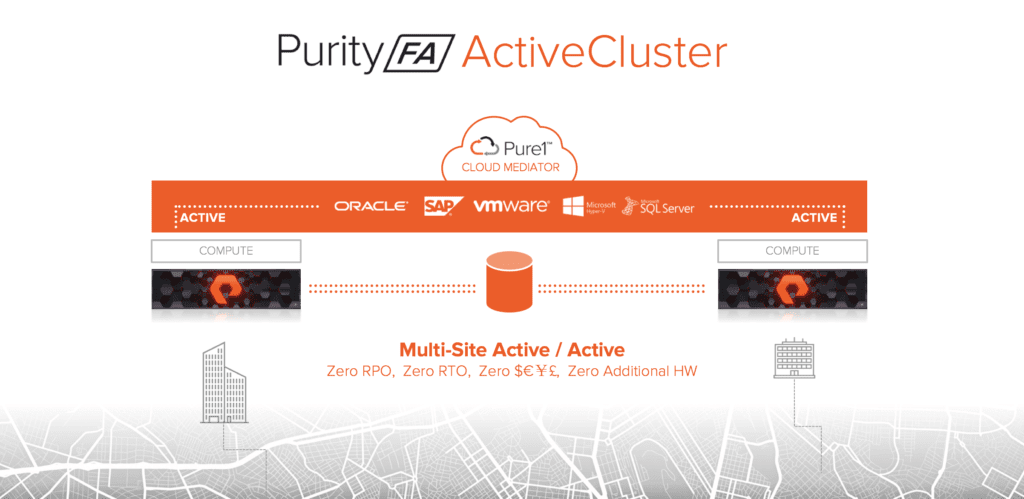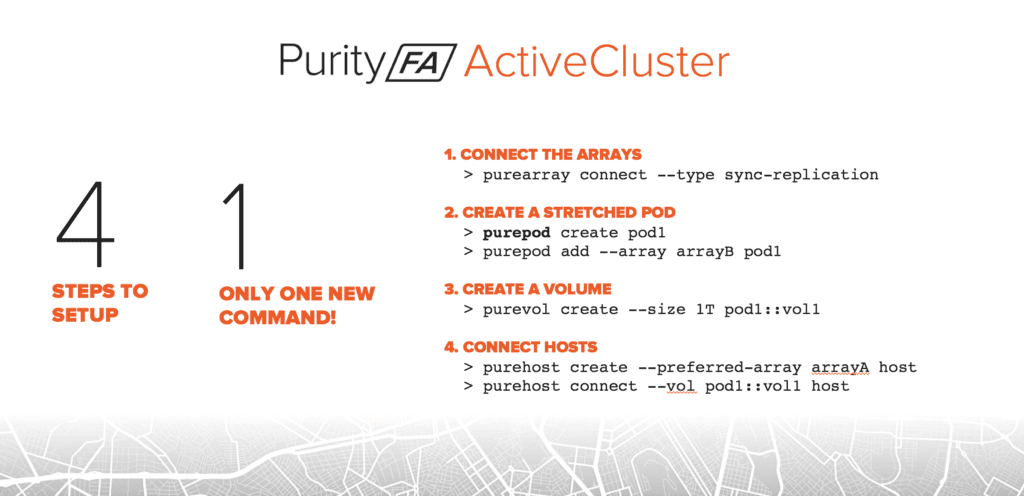ESET is a global provider of anti-virus software for home users and businesses of all sizes, from SMB’s to enterprises. Brian Cummings, a Solutions Architect for ESET, shares his experience with Pure Storage’s new ActiveCluster solution for business continuity and disaster recovery.
Our company’s reputation rests on our ability to provide customers with comprehensive and ultra-reliable protection against outside cyber attacks. That’s why we can’t afford any interruption in our IT operations. Business continuity is essential to both our customers and our bottom line.
Over the years, we have tried many different solutions for business continuity, and none has been as remarkable as ActiveCluster from Pure Storage. ActiveCluster performs synchronous replication between remote sites automatically and transparently, without downtime, human intervention or added cost. Let me put the significance of this capability into context.

ESET is a global company, and our North American operations are headquartered in San Diego, where we maintain two data centers, one is under our control, the other is in a co-lo facility. We are heavily virtualized, using VMware vSphere, NSX and Horizon.
Before becoming a Pure Storage customer in 2013, I had experience with synchronous replication from several leading storage vendors. In every case, implementation required hours of planning, maintenance windows and professional services. It was complex, time-consuming and expensive.
In contrast, implementing ActiveCluster cannot be easier. Following a simple upgrade to the latest version of Purity software (beta version), all we have to do is follow a four-step process that takes less than 10 minutes. First, you connect the arrays. Next, you create a stretched pod, followed by a volume. Then, just connect the hosts. No manuals to follow, no consultants to hire.

ActiveCluster integrates very well with the VMware solutions we are already familiar with. For our mission-critical applications that cannot tolerate any downtime, we now use ActiveCluster and vSphere Fault Tolerance. For less-critical workloads, we employ ActiveCluster and vSphere HA, a vSphere Metro Storage Cluster verified solution.
While we fortunately have not experienced any major disruptions in the months we have been using ActiveCluster, we have performed rigorous testing of a wide variety of failure scenarios, all the way from the loss of a single VM to a full-site shutdown. The results have been impressive.
Here’s just one example. We can seamlessly move the workloads of 1,500-plus virtual machines from one data center to the other in less than 15 minutes, with no downtime or system administration of any kind. Previously, any disruption required manual intervention by the IT staff, using restoration from a snapshot or from a secondary disk or tape. Inevitably, this would involve some data loss, as well as a lot of time – RTOs of as long as 24 hours.
With ActiveCluster, we achieve a seamless failover of VMs between our two sites with no intervention whatsoever by our IT staff. Bottom line: an RTO of zero. This saves time and money. Other synchronous replication solutions we explored cost up to $500,000, while ActiveCluster was an upgrade included in our subscription to Pure’s Evergreen™ Storage program, which already provides us with so many valuable features all included under the known cost of a maintenance contract.
Any IT shop concerned about reliable, cost-effective business continuity and disaster recovery solutions should closely examine Pure’s ActiveCluster technology.
We thank Brian for sharing his experience. To learn more about Business Continuity with Purity ActiveCluster, read this white paper.







